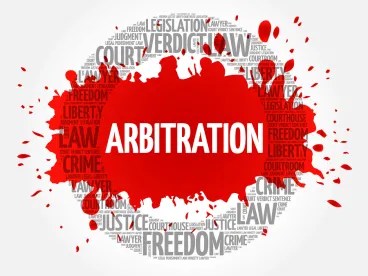In a long-awaited decision, the United States Supreme Court, by a 5-to-4 vote, overturned the National Labor Relations Board’s (the “Board”) ruling that class action waivers violate the National Labor Relations Act (NLRA) because they interfere with the right to engage in “protected activity,” which, according to the Board, includes the ability to bring class or collective actions. Epic Sys. Corp. v. Lewis, No. 16-0285, 2018 WL 2292444, at *23 (U.S. May 21, 2018).
In each of the three consolidated cases, an employer and employee had entered into a written contract that provided for individualized arbitration proceedings to resolve employment disputes. Each employee nonetheless sought to litigate Fair Labor Standards Act (FLSA) and related state law claims through class or collective actions, and argued that their agreements violated the NLRA by requiring individualized proceedings. The employers countered that the Federal Arbitration Act (FAA) protects agreements requiring arbitration from judicial interference and that neither the FAA’s savings clause nor the NLRA demands a different conclusion.
Justice Gorsuch wrote the opinion for the majority. The Court stated that the answer was clear as a matter of law because, under the FAA, Congress has instructed courts to enforce arbitration agreements according to their terms. The Court’s decision sends a strong message that courts should enforce agreements between employees and employers to arbitrate their claims according to the terms of their arbitration agreements. If those arbitration agreements include a clause that permits individualized claims only, then those class action waivers should be enforced as well.
For 77 years, the Board seemed to support fully the FAA’s strong presumption favoring arbitration. In 2012, however, the Board adopted the position that the NLRA overrides the FAA when it comes to class action waivers. Although federal appellate courts initially were hostile to the Board’s position, several recently adopted the Board’s stance that class action waivers violate the NLRA. This conflict resulted in these cases being presented to the Supreme Court.
The decision involved a number of important legal doctrines, the first being that where two federal laws allegedly touch on the same topic, the Court must strive to “give effect to both.” One federal law should not displace the other, absent “clear and manifest congressional” intent. The Court rejected the Board’s position that the NLRA, which gives employees the right to engage in “concerted activities,” includes within that definition the ability to bring class and collective actions. The Court noted that the NLRA was intended to permit employees to organize unions and bargain collectively, and that nowhere does the statute refer to the ability to bring class or collective actions.
Moreover, the Court recognized that the case was filed under the FLSA and did not involve a claim under the NLRA. As such, the Board was not exercising its ability to enforce the NLRA but straying into the jurisdiction of another federal statute. The Board found that the FLSA did not contain any prohibition against the arbitration of individual wage and hour claims.
The Court also refused to apply the Chevron Doctrine, which promotes judicial deference to the administrative agency (here, the NLRB) where there is an unresolved ambiguity within the statute assigned to that agency. The Court held that that there was no ambiguity and, therefore, no need to apply Chevron.
Justice Ginsburg wrote a dissenting opinion that focused on the market imbalance between employers and employees, which in her view renders an employee’s right to refuse to engage in individual arbitration an unrealistic possibility. According to Justice Ginsburg, workers do not have an effective means of addressing their rights to statutory wages except by “band[ing] together [and] confronting an employer.” As the majority pointed out, however, the dissent was focused on a contractual defense, i.e., that the contract was necessarily one of adhesion or unconscionability rather than an issue of statutory interpretation. The dissent implied that workers can never enter into a bilateral agreement to arbitrate because of their lack of bargaining power. The dissent went so far as to invoke a warning that the Court was retreating to the pre-NLRA era of “yellow dog contracts” that required employees to sign agreements to abstain from joining a labor union as a condition of their employment. The dissent’s rationale seems to have run far afield of the issue before the Court.
The Court’s decision may have ramifications far beyond rejecting the Board’s interpretation of the NLRA. The Court reasserted the FAA’s preference to uphold arbitration agreements and the long line of Supreme Court precedent also favoring arbitration agreements between employers and employees. It also re-emphasized that employees have the right to contractually agree to arbitration and waive their statutory rights. The Court did not assume that workers are unable to make these decisions for themselves. This decision may result in the resurgence of arbitration agreements and is the first step to resolving the question of whether such agreements can be enforced fully on their terms. The decision may also call into question the Board’s expansion of the right to engage in concerted protected activities in non-unionized circumstances, which in recent years has included social media posts, the confidentiality of co-worker salary information, and confidentiality clauses in employee settlement agreements.






 />i
/>i
